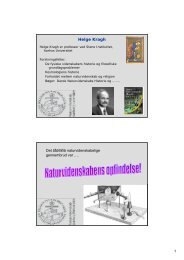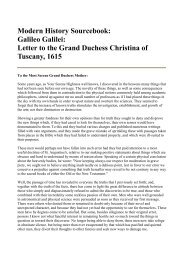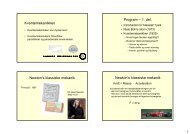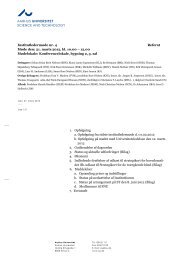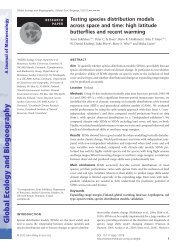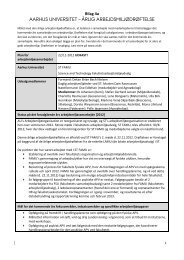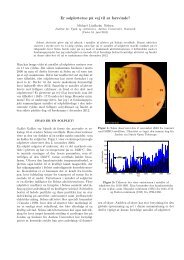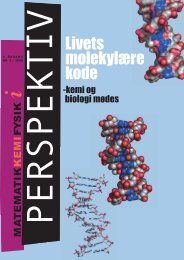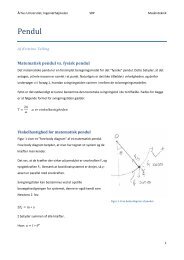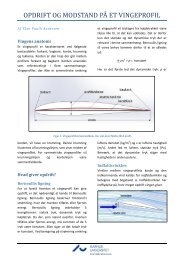03 Synthesis and characterisation of YBCO (Superconductor) Aim ...
03 Synthesis and characterisation of YBCO (Superconductor) Aim ...
03 Synthesis and characterisation of YBCO (Superconductor) Aim ...
You also want an ePaper? Increase the reach of your titles
YUMPU automatically turns print PDFs into web optimized ePapers that Google loves.
<strong>03</strong> <strong>Synthesis</strong> <strong>and</strong> <strong>characterisation</strong> <strong>of</strong> <strong>YBCO</strong> (<strong>Superconductor</strong>)<br />
<strong>Aim</strong>: Prepare the superconductor YBa 2 Cu 3 O 7-δ with different oxygen content.<br />
Characterization: Powder diffraction <strong>and</strong> resistivity measurements.<br />
Technique: Solid state reaction <strong>of</strong> oxide materials<br />
Material properties: <strong>Superconductor</strong>.<br />
Chemicals: Y 2 O 3<br />
BaO 2<br />
CuO<br />
Instructions:<br />
1) The powders are weighed stoichiometrically to obtain the correct ratio between Y:Ba:Cu, which<br />
is 1:2:3, the resulting oxygen content nominally exceeds 7.<br />
2)a) The powders are ground <strong>and</strong> packed loosely into an Al 2 O 3 crucible.(eller blot i beholder)<br />
Hertil kan forberedes på gymnasiet<br />
Rest foregår på Universitetet<br />
2)b) The crucible is placed in a furnace <strong>and</strong> heated to 940°C, <strong>and</strong> held there for 12 hours. The<br />
product is furnace cooled.<br />
3) The powder is reground <strong>and</strong> pressed into pellets. Use ~2 cm dies for pressing. The pressed pellet<br />
is furnace heated to 940°C <strong>and</strong> slowly cooled to room temperatures. Samples are removed at<br />
temperature intervals to introduce oxygen deficiencies (e.g. in steps <strong>of</strong> 100°C from 600-500°C<br />
down to room temperature).<br />
4) Powder diffraction investigation to establish unit celle size<br />
5) Phase transition temperature is measured utilizing the Meissner effect.<br />
6) Oxygen content is determined by volumetric method.<br />
Relevant literature:<br />
Superconductivity at 93 K in a new Mixed phase Y-Ba-Co-O compound system at ambient<br />
pressure<br />
M. K. Wu, J. R. Ashburn, C. J. Torng, P. H. Hor, R. L. Meng, L. Gao, Z. J. Huang, Y. Q. Wang<br />
Phys. Rev. Lett. 58, 908-910 (1987)<br />
Oxygen determination from cell dimensions in <strong>YBCO</strong> superconductors<br />
Benzi P, Bottizzo E, Rizzi N<br />
J. Crystal Growth 269, 625-629 (2004)<br />
Superconductivity at 39 K in magnesium diboride<br />
Jun Nagamatsu, Norimasa Nakagawa, Takahiro Muranaka, Yuji Zenitani <strong>and</strong> Jun Akimitsu<br />
Nature 410, 63-64 (2001)<br />
Bonding Nature in MgB 2<br />
E. Nishibori, M. Takata, M. Sakata, H. Tanaka, T. Muranaka <strong>and</strong> J. Akimitsu<br />
J. Phys. Soc. Jpn. 70, 2252-2254 (2001)
Determination <strong>of</strong> oxygen content using iodiometric titration<br />
Iodiometric titration can be used to determine the Cu 2+ <strong>and</strong> Cu 3+ concentration. The Cu 3+<br />
concentration is proportional to the amount <strong>of</strong> oxygen in the sample.<br />
Y 3+ Ba 2 2+ Cu 3-x 2+ Cu x 3+ O y<br />
2-<br />
In principle these experiments should be performed under inert atmosphere to avoid oxidation by<br />
air, but this unfortunately we cannot do.<br />
We need two experiments to determine x. Experiment A) <strong>YBCO</strong> is boiled in HCl to transform Cu 3+<br />
to Cu 2+ the titration gives the total amount <strong>of</strong> Cu in the sample. B) the sample is dissolved in HCl<br />
<strong>and</strong> titrated directly giving the concentration <strong>of</strong> Cu 2+ <strong>and</strong> Cu 3+ , now since Cu 3+ produces more I 2 is<br />
possible to extract the Cu 3+ concentration <strong>of</strong> the sample <strong>and</strong> thus the oxygen content.<br />
Three experiments <strong>of</strong> each titration are done to allow calculation <strong>of</strong> mean <strong>and</strong> average value – this<br />
gives a total <strong>of</strong> 6 titrations.<br />
A) Total concentration <strong>of</strong> Cu 2+ .<br />
About 30 mg <strong>of</strong> <strong>YBCO</strong> is dissolved in approximately 5ml 1M HCl <strong>and</strong> boiled for 10 min.<br />
Cu 3+ is hereby reduced to Cu 2+ .<br />
10 ml 0.7 N KI is added.<br />
Titration using thiosulfat see concentration in the lab – should be around 0.1 M (so you need<br />
approximately 1 mL).<br />
Close to the equivalence point starch is added.<br />
The processes taking place are<br />
2Cu 2+ +4I - 2CuI + I 2<br />
2S 2 O 3 2- + I 2 S 4 O 6 2- + 2I -<br />
B) The <strong>YBCO</strong> is dissolved in 7 ml <strong>of</strong> 0.7M HCl.<br />
Add 7 ml <strong>of</strong> 1M KI<br />
Start titration using thiosulfate<br />
The processes taking place are<br />
Cu 3+ + 3I - CuI + I 2<br />
2Cu 2+ +4I - 2CuI + I 2<br />
2S 2 O 3 2- + I 2 S 4 O 6 2- + 2I -<br />
The titration <strong>of</strong> Cu 3+ corresponds to the double concentration compared to Cu 2+ Subtracting the<br />
used volumes <strong>of</strong> S 2 O 3 2- in A <strong>and</strong> B gives the concentration <strong>of</strong> Cu 3+ . Using the oxidation state <strong>of</strong> the<br />
individual elements in <strong>YBCO</strong> <strong>and</strong> neutrality – the total oxygen concentration can be found.



